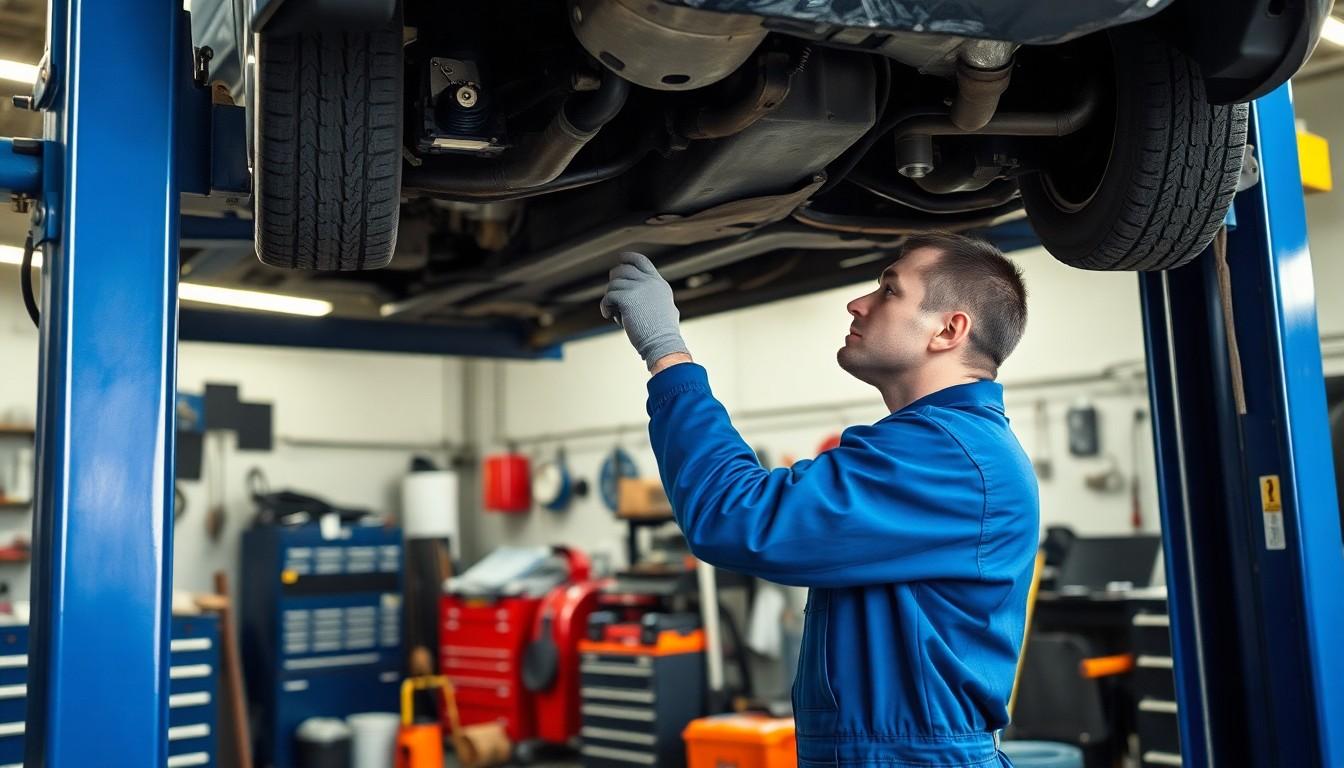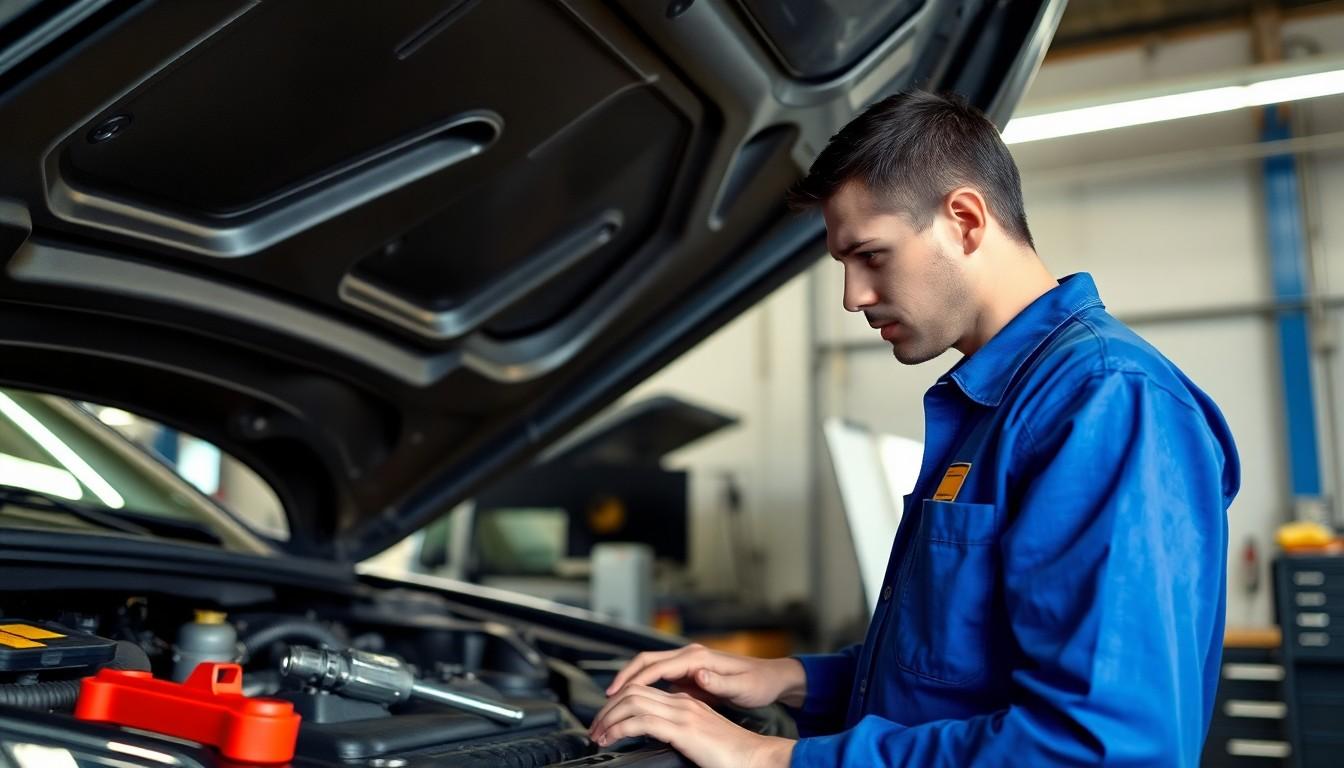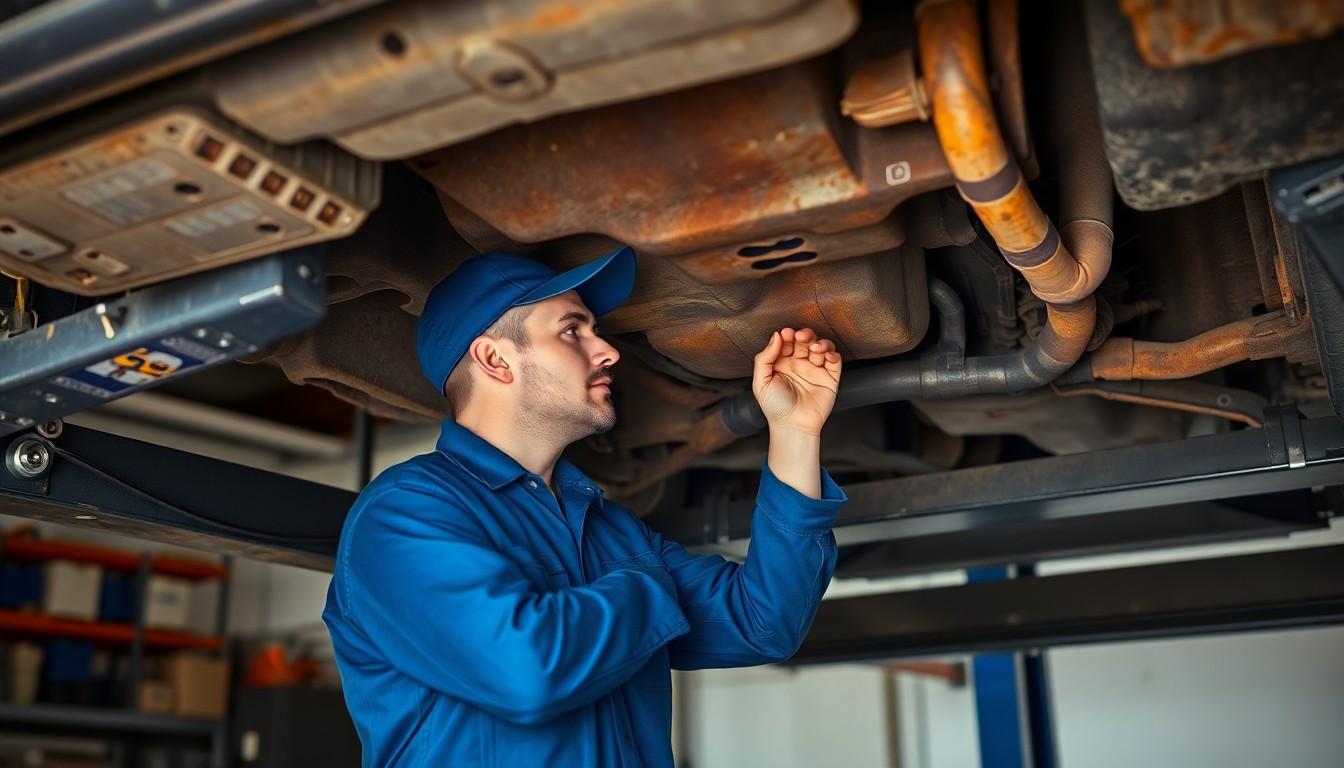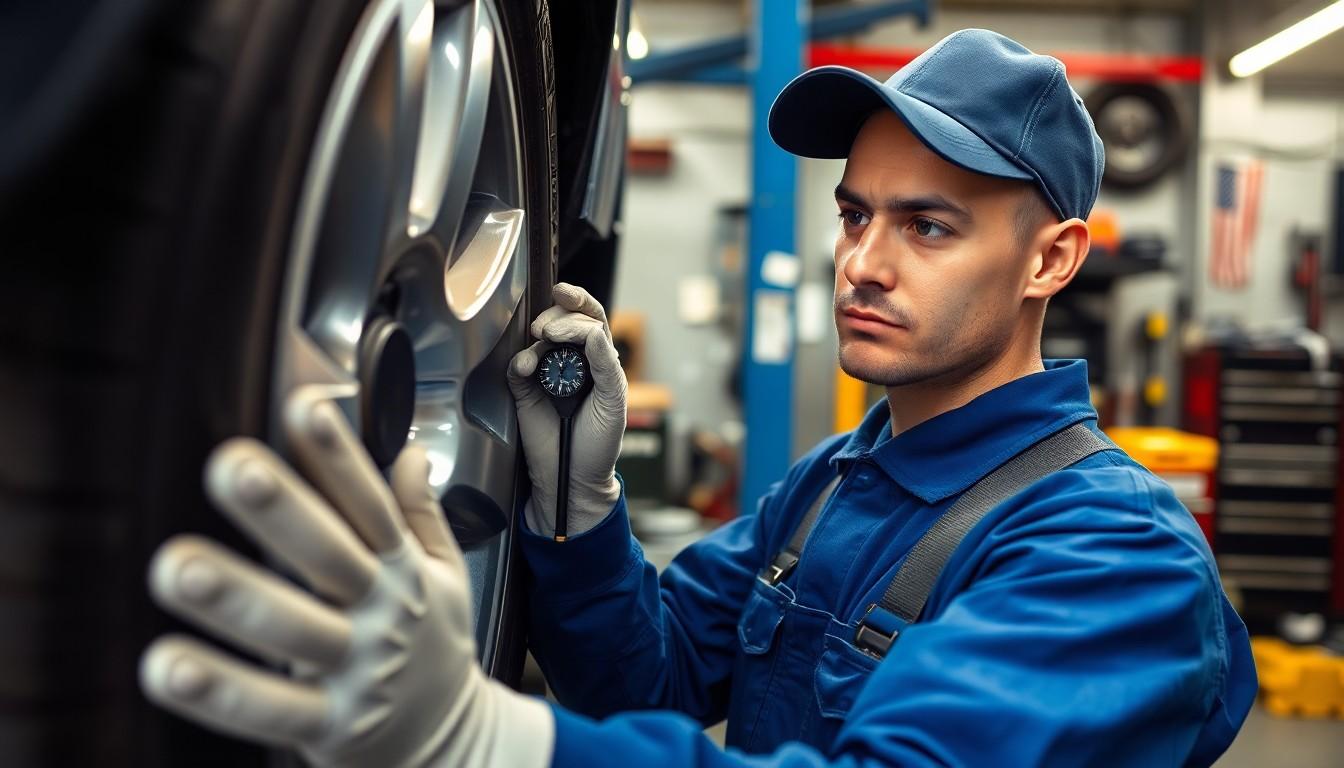Wondering what might derail your next vehicle inspection? We’ve all been there—anxiously waiting while a technician scrutinizes our car, hoping everything passes. A failed inspection isn’t just inconvenient; it can be costly and potentially dangerous if you’re driving an unsafe vehicle.
From worn brake pads to malfunctioning headlights, many issues can trigger that dreaded “fail” stamp on your inspection report. In our years helping drivers navigate these requirements, we’ve seen the most common culprits that send cars back for repairs. Understanding these potential pitfalls before your appointment could save you time, money, and stress.
Common Vehicle Inspection Failures
Vehicle inspections catch many issues that compromise safety and compliance on the road. Understanding these common failures helps you anticipate potential problems and address them before your inspection date arrives.
Safety Equipment Issues
Safety equipment failures rank among the top reasons vehicles don’t pass inspection. Worn brake pads with less than 1/4 inch of material remaining trigger immediate failures due to their critical role in stopping distance. Seatbelts showing signs of fraying, damaged retraction mechanisms, or missing components also lead to automatic rejections. Airbag warning lights illuminate when the system detects a malfunction, signaling to inspectors that this life-saving feature isn’t functioning properly. Damaged windshields with cracks longer than 6 inches or chips in the driver’s line of sight create visibility hazards that inspectors flag immediately. ABS warning lights indicate potential braking system issues that could compromise vehicle control during emergency stops.
Lighting System Defects
Lighting problems frequently cause inspection failures across all vehicle types. Burned-out headlights, taillights, or brake lights create dangerous visibility conditions, especially at night or in adverse weather. Turn signals that don’t activate or flash at incorrect rates (too fast often indicates a bulb is out) violate traffic safety regulations. License plate lights must properly illuminate your plate during nighttime hours – many drivers overlook this small but mandatory feature. Misaligned headlights pointing too high blind oncoming drivers or pointing too low reduce your visibility range. Cracked or foggy lens covers diminish light output significantly even when bulbs work perfectly. Hazard warning lights must function properly as they’re essential during roadside emergencies. Dashboard indicator lights that stay illuminated after startup suggest underlying electrical or mechanical issues requiring attention.
Mechanical Problems That Cause Inspection Failures

Mechanical issues represent some of the most common reasons for failed vehicle inspections across the country. These problems range from emissions system malfunctions to brake failures and steering defects that compromise vehicle safety and performance.
Emissions Issues
Emissions-related problems are frequently cited during inspections. A malfunctioning catalytic converter often triggers the check engine light and causes excessive pollutant emissions. Incorrect air-to-fuel mixtures lead to poor combustion efficiency and increased emissions. Faulty PCV valves contribute to oil consumption and environmental contamination when they fail to properly recirculate crankcase gases. Vacuum leaks in the intake system create unmetered air entering the engine, disrupting the fuel mixture and causing erratic performance. The EGR system, when compromised, increases nitrogen oxide emissions and can trigger dashboard warning lights. Any illuminated “Check Engine” or “Service Engine Soon” light automatically results in inspection failure in many states.
Gas Cap Issues
Gas cap problems are surprisingly common inspection failures that owners often overlook. Leaking gas caps allow fuel vapors to escape, increasing emissions and failing the evaporative emissions test. Missing or damaged gas caps can’t properly seal the fuel system, resulting in immediate inspection failure in states with strict emissions testing requirements.
Lighting and Electrical Problems
Lighting defects represent immediate safety concerns that inspectors don’t ignore. Broken headlights, taillights, or turn signals prevent other drivers from properly identifying your vehicle’s position or intentions on the road. Malfunctioning or missing mirrors limit visibility and create dangerous blind spots during lane changes. Car horns that are either non-functional, too quiet to be heard in traffic, or excessively loud also constitute inspection failures.
Exhaust System Defects
Exhaust system integrity is essential for both emissions compliance and passenger safety. Stolen or damaged catalytic converters result in immediate inspection failure due to their critical role in reducing harmful emissions. Leaking exhaust manifolds or pipes allow deadly carbon monoxide to potentially enter the passenger compartment. Excessively loud mufflers that exceed legal noise limits can also trigger inspection rejection.
Brake System Failures
Brake system defects present serious safety hazards that inspectors scrutinize carefully. Worn brake pads measuring less than 1/16 of an inch thick fail to meet minimum thickness requirements and constitute an automatic inspection rejection. Warped rotors cause pulsation during braking and reduce stopping effectiveness in emergency situations. Leaking brake lines or calipers compromise hydraulic pressure and can lead to complete brake failure. Parking brakes that don’t properly engage or hold the vehicle on inclines also represent inspection failures in most states.
Steering and Suspension Issues
Steering problems directly impact driver control and safety on the road. Excessive play in the steering wheel (more than 2 inches of movement before the wheels respond) indicates worn components that require immediate attention. Power steering fluid leaks or unusual noises during turning maneuvers suggest pump or rack-and-pinion failures. Suspension defects like worn ball joints, control arm bushings, or damaged struts/shocks create unstable handling and extended stopping distances. Uneven tire wear patterns often reveal underlying steering or suspension problems that inspectors readily identify during visual examinations.
Emission System Failures

Emission system failures represent one of the most common reasons for rejected vehicle inspections nationwide. These issues directly impact your vehicle’s environmental footprint and can signify more serious underlying mechanical problems.
Failed Emissions Tests
Emission tests measure the pollutants your vehicle releases into the atmosphere during operation. A malfunctioning oxygen sensor often triggers emission test failures by sending incorrect readings to your engine’s computer, causing improper fuel mixture. Faulty fuel injectors contribute to failed tests by creating incomplete combustion that produces excess hydrocarbons. Vehicles with deteriorating spark plugs typically demonstrate higher emission levels due to inefficient fuel burning. Leaks in the exhaust manifold or pipes allow untreated emissions to escape before reaching the catalytic converter, resulting in automatic test failure. The absence or theft of a catalytic converter guarantees inspection rejection, as this component is critical for reducing harmful pollutants.
Check Engine Light Problems
The check engine light serves as an early warning system for emission-related issues in your vehicle. Modern vehicles (1996 and newer) use On-Board Diagnostics (OBD) systems that inspectors check during the evaluation process. Any active trouble codes stored in your vehicle’s computer system trigger immediate inspection failure, regardless of how minor the issue might seem. Common OBD failure causes include oxygen sensor malfunctions, catalytic converter efficiency problems, and engine misfires. Even if your vehicle appears to run normally, the check engine light indicates problems that compromise emission performance and environmental compliance. Temporary fixes like disconnecting the battery to reset the light won’t fool inspection equipment, as the system records “readiness monitors” that show whether diagnostic tests have been completed.
Body and Frame Inspection Issues

Body and frame integrity directly impacts vehicle safety and performance during inspections. Inspectors meticulously examine these structural components for signs of damage that could compromise your vehicle’s roadworthiness.
Excessive Rust and Corrosion
Excessive rust and corrosion represent major concerns during vehicle inspections. Metal degradation on critical components like doors, quarter panels, hood, and fenders frequently leads to inspection failure when the damage is important. Brake lines affected by severe corrosion pose particular dangers, as compromised brake components dramatically increase accident risks. Many inspection stations specifically check for excessively corroded metal brake lines and will immediately fail vehicles with this potentially life-threatening issue. Rust that has eaten through body panels or created holes in critical structural areas isn’t considered merely cosmetic damage—it’s classified as a serious safety concern.
Windshield and Window Damage
Windshield and window damage commonly causes inspection failures due to visibility and structural concerns. Chips and cracks in the windshield that obstruct the driver’s view are immediate grounds for rejection during inspection. Safety inspectors evaluate whether any glass damage compromises the windshield’s structural integrity, which plays a crucial role in accident protection. Side and rear windows with cracks or important damage also typically trigger inspection failures, particularly when the damage affects visibility or creates sharp edges. Inspectors understand that compromised windows not only reduce visibility but can also shatter unexpectedly during normal driving conditions or accidents.
Tire and Wheel Problems

Tire and wheel issues rank among the most common reasons vehicles fail inspections. These components directly impact safety, handling, and performance on the road, making them critical inspection points for technicians evaluating your vehicle.
Tread Depth Violations
Insufficient tire tread depth is an automatic inspection failure in most states. The legal minimum tread depth is typically 2/32 of an inch, and any measurement below this threshold will result in rejection. Shallow treads significantly reduce traction in wet conditions, increasing hydroplaning risks and extending braking distances. Inspectors use specialized gauges to measure multiple points across each tire, ensuring adequate depth across the entire tread surface. Tires with uneven wear patterns may fail inspection even if some sections meet the minimum requirement.
Worn Tires
Inspectors thoroughly examine tires for signs of excessive wear beyond just tread depth. Bumps, bulges, and knots in tire sidewalls indicate potential structural failure and represent immediate safety hazards. Cracks and cuts in the rubber compromise tire integrity and can lead to sudden blowouts at high speeds. Exposed steel belts or cords showing through the rubber surface demonstrate severe deterioration requiring immediate replacement. Any visible damage, including sidewall bubbles or objects embedded in the tread, typically results in inspection failure.
Wheel Alignment Issues
Poor wheel alignment often contributes to inspection failures indirectly by causing uneven tire wear. Misaligned wheels create irregular tread patterns, with excessive wear on inner or outer edges. Alignment problems develop from hitting potholes, minor accidents, or worn suspension components. Symptoms include vehicle pulling to one side, steering wheel vibration, or tires that squeal when turning corners. Though alignment itself isn’t typically a direct inspection criterion, the resulting tire wear patterns can trigger rejection during the tire inspection portion of the evaluation.
How to Prepare Your Vehicle for Inspection

A thorough preparation before your vehicle inspection can save you time, money, and frustration. Following a systematic approach ensures you’ve addressed the most common issues inspectors look for during the evaluation process.
Pre-Inspection Checklist
Getting your car ready for inspection requires attention to several key areas. Our comprehensive checklist covers the critical components inspectors examine during the evaluation process.
Exterior Inspection Points
Check all exterior lights including headlights, taillights, brake lights, and turn signals for proper operation. Examine your tires for adequate tread depth (at least 2/32 of an inch) and look for signs of uneven wear, bulges, or damage that could lead to rejection. Inspect all mirrors to ensure they’re securely attached and free from cracks or breaks. Carefully evaluate your windshield for chips or cracks that might obstruct visibility or compromise structural integrity. Replace worn windshield wipers that can’t effectively clear your windshield during precipitation.
Interior Components to Check
Test your heating and air conditioning system to confirm it functions correctly. Inspect the upholstery for important tears or damage that might be flagged during inspection. Remove excessive clutter and clean the interior thoroughly to meet sanitation requirements, particularly important for commercial vehicles. Verify that all dashboard warning lights function properly but don’t remain illuminated, especially the check engine light which can trigger an automatic failure.
Under the Hood Essentials
Look for fluid leaks from the engine, transmission, or power steering systems, as even small leaks can cause inspection failures. Ensure your gas cap fits properly, doesn’t leak, and can be removed easily for testing. Consider using an OBD scanner to check for any trouble codes before the inspection, addressing any issues that appear. Examine belts and hoses for cracks, fraying, or other signs of deterioration that might lead to mechanical problems.
Safety Systems Verification
Test your brakes thoroughly, checking for pad thickness (at least 1/16 of an inch), pedal firmness, and stopping capability. Evaluate your steering system for excessive play, unusual noises, or difficulty turning. Verify your catalytic converter is present and properly attached, as a missing or malfunctioning converter guarantees inspection failure. Test your car horn to ensure it’s audible but not excessively loud, as both extremes can cause failures.
Final Preparations
If required in your jurisdiction, make sure your first aid kit is complete and hasn’t expired. Check any window tinting against legal requirements, as DIY tinting often fails to meet regulatory standards. Address any check engine lights well before inspection day, allowing sufficient time for the system to complete its readiness monitors after repairs. Clean license plates and ensure they’re properly mounted and visible to avoid unnecessary complications during the inspection process.
State-Specific Inspection Requirements

North Carolina Inspection Standards
North Carolina implements strict inspection criteria that focus on both safety and emissions. Brake pads must maintain at least 1/16 of an inch thickness to pass inspection in the state. Excessively discolored headlight lenses require restoration before approval can be granted. Legal window tinting standards are strictly enforced during inspections. Every vehicle must also complete emissions testing unless it qualifies for an exemption based on age, type, or location within the state.
Washington, D.C. Commercial Vehicle Requirements
Commercial vehicles in Washington, D.C. face additional inspection points beyond standard safety checks. Gas cap leaks automatically trigger a failed inspection due to emissions concerns. Non-operational heating and air conditioning systems can prevent commercial vehicles from passing. Damaged or torn upholstery is considered unacceptable for commercial vehicles undergoing inspection. The district’s requirements emphasize both passenger comfort and environmental protection alongside basic safety standards.
Interstate Inspection Variations
Inspection requirements vary significantly between states, with some focusing heavily on emissions while others prioritize safety equipment. Tread depth minimums fluctuate across state lines, though most require at least 1/16 of an inch. Window tinting regulations differ dramatically, with southern states often allowing darker tints than northern regions. Many states exempt newer vehicles from certain inspection requirements during their first few years of operation. Understanding local regulations before moving to a new state helps drivers avoid unexpected inspection failures.
Conclusion
Being proactive about car maintenance isn’t just about passing inspections—it’s about keeping you and others safe on the road. Regular checks of your vehicle’s critical systems can help identify potential issues before they become inspection failures or safety hazards.
We recommend reviewing your state’s exact requirements and using our pre-inspection checklist to ensure you’re fully prepared. Remember that addressing problems early typically costs less than dealing with them after a failed inspection.
By staying vigilant about your vehicle’s condition year-round you’ll not only increase your chances of passing inspections but also extend your car’s lifespan and maintain its reliability. Don’t wait until inspection time to address these common issues—your safety and wallet will thank you.
Frequently Asked Questions
What happens if my vehicle fails an inspection?
If your vehicle fails inspection, you’ll typically need to repair the identified issues and have your vehicle re-inspected. Some states offer a grace period for repairs before penalties apply. You may face fines, registration suspension, or inability to renew your vehicle’s registration if you don’t address the problems. Additionally, driving with serious safety defects could put you and others at risk on the road.
What are the most common reasons vehicles fail inspections?
The most common inspection failures include worn brake pads, faulty lighting systems (burned-out bulbs, misaligned headlights), emissions system issues, check engine lights, excessive frame rust, windshield damage that obstructs vision, and insufficient tire tread depth. Safety equipment problems like frayed seatbelts and malfunctioning airbags also frequently cause failures. Addressing these issues before your inspection can save time and money.
How can I prepare my vehicle for inspection?
Create a pre-inspection checklist covering: exterior lights, tire condition, mirrors, and windshield integrity. Check that interior systems work properly and dashboard warning lights aren’t illuminated. Examine under-the-hood for fluid leaks, secure gas cap, and worn belts. Test brakes and steering. Verify your catalytic converter is present and functioning. Clean your vehicle inside and out, and ensure all documentation is readily available.
Do inspection requirements vary by state?
Yes, inspection requirements vary significantly between states. Some states like North Carolina have strict criteria for both safety and emissions, while others may focus primarily on one aspect. Requirements for tire tread depth, window tinting, and emissions standards differ by location. Commercial vehicles often face additional inspection points. Research your state’s specific requirements before scheduling an inspection to avoid unexpected failures.
Why do emissions systems commonly fail inspections?
Emissions systems fail inspections due to malfunctioning oxygen sensors, faulty fuel injectors, deteriorating spark plugs, and exhaust leaks. A missing or non-functioning catalytic converter guarantees failure. An illuminated check engine light will trigger immediate rejection, as it indicates potential emissions problems. Temporary fixes like disconnecting the battery won’t work because modern inspection equipment checks if diagnostic systems are ready and functioning properly.
When should I address windshield damage before an inspection?
Address windshield damage immediately if it obstructs your vision or extends more than 3/4 inch in diameter. Cracks that reach the edge of the windshield are particularly concerning as they compromise structural integrity. Even small chips can expand quickly due to temperature changes or road vibrations. Most states will fail a vehicle with significant windshield damage, and repairing small chips early is far less expensive than replacing the entire windshield.
How do tire problems affect vehicle inspections?
Tire problems are among the most common reasons for inspection failures. Tread depth below the legal minimum (typically 2/32 of an inch) results in automatic rejection. Inspectors look for excessive or uneven wear, bumps, bulges, and cracks that indicate potential tire failure. While wheel alignment itself isn’t directly inspected, misalignment causes uneven tire wear that can lead to rejection, along with symptoms like vehicle pulling and steering wheel vibration.
What should I do if my check engine light is on before inspection?
Get the trouble code diagnosed immediately using an OBD scanner at an auto parts store or repair shop. Address the underlying issue rather than attempting temporary fixes like disconnecting the battery, which won’t work because inspection equipment checks if diagnostic systems are ready. Even minor problems trigger the light and cause inspection failure. Schedule repairs with enough driving time before inspection to allow systems to complete their readiness monitors.














